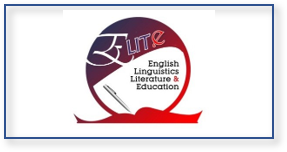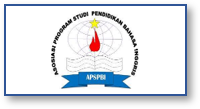Youtube Videos As Learning Media:A Review In EFL Contexts
DOI:
https://doi.org/10.15642/ijet2.2022.11.2.220-232Keywords:
English as a foreign language, teaching media, technology, skills, YouTube VideosAbstract
YouTube has become one of the most visited social media globally. Its saturation in students' lives has triggered experiments and observations on the use of YouTube as learning media. This article discusses the use of YouTube videos to teach English language skills using George's literature review model. The databases for selecting the articles used as the data source in this study were Google scholar and ERIC. The relevant articles were published in reputable international journals and nationally accredited journals in the past ten years. Studies on the use of YouTube videos as a teaching medium indicate that using YouTube videos can improve students' listening, reading, speaking, and writing skills and solve their problems in mastering the skills. Furthermore, YouTube videos have been proven to help students solve their grammar difficulties and increase their vocabulary. YouTube videos are also agreed to have kept the students more interested, motivated, and enthusiastic towards English language learning. These results imply that relevant YouTube videos can provide good learning media for supporting students' learning of English as a Foreign Language.
Downloads
References
Abdullah, B. M. A., Murad, I. H., & Abdullah, H. F. (2020). Kurdish students’ attitudes towards the use of films in teaching literary works in EFL classroom. JEELS (Journal of English Education and Linguistics Studies), 7(1), 91–113. https://doi.org/10.30762/jeels.v7i1.1431
Abdulrahman, T. R., & Basalama, N. (2019). Promoting students’ motivation in learning English vocabulary through a collaborative video project. Celt: A Journal of Culture, English Language Teaching & Literature, 19(1), 107–137. https://doi.org/10.24167/celt.v19i1.493
Al-Jarf, R. (2012). Online videos for specific purposes. Journal of Educational and Social Research, 2(6), 17–21. https://papers.ssrn.com/sol3/Delivery.cfm/SSRN_ID3847637_code4556695.pdf?abstractid=3847637&mirid=1
Albantani, A. M., & Madkur, A. (2017). Musyahadat Al Fidyu: YouTube-based teaching and learning of Arabic as Foreign Language (AFL). Dinamika Ilmu, 17(2), 291–308. https://doi.org/10.21093/di.v17i2.854
Ali, A. M., & Jabar, N. (2016). Cultural Video Project Assignment (VPA) through the eyes of young ESL learners: A multi-modal vocabulary learning approach. Indonesian Journal of EFL and Linguistics, 1(2), 157–173. https://doi.org/10.21462/ijefll.v1i2.11
Alwehaibi, H. O. (2015). The impact of using YouTube in EFL classroom on enhancing EFL students’ content learning. Journal of College Teaching & Learning (TLC), 12(2), 121–126. https://doi.org/10.19030/tlc.v12i2.9182
Angkananon, K., & Wald, M. (2018). An experimental study of subtitled online video supporting Thai students learning English IT content. Teaching English with Technology, 18(4), 48–70. https://files.eric.ed.gov/fulltext/EJ1195804.pdf
Aniuranti, A., & Suwartono, T. (2020). Teaching English allomorphs through “Harry Potter and the Chamber of Secret” movie. EduLite: Journal of English Education, Literature and Culture. https://doi.org/10.30659/e.5.2.192-201
Aprizani, Y. (2016). Improving reading comprehension using Contextual Teaching and Learning (CTL). Studies in English Language and Education, 3(2), 170–187. https://doi.org/10.24815/siele.v3i2.4964
Ariantini, K. P., Suwastini, N. K. A., Adnyani, N. L. P. S., Dantes, G. R., & Jayantini, I. G. A. S. R. (2021). Integrating social media into English language learning: How and to what benefits according to recent studies. NOBEL: Journal of Literature and Language Teaching, 12(1), 91–111. https://doi.org/https://doi.org/10.15642/NOBEL.2021.12.1.91-111
Balbay, S., & Kilis, S. (2017). Students’ perceptions of the use of a YouTube channel specifically designed for an academic speaking skills course. Eurasian Journal of Applied Linguistics, 3(2), 235–251. https://doi.org/10.32601/ejal.461003
Bram, B. (2012). Learners’ language challenges in writing English. Celt: A Journal of Culture, English Language Teaching & Literature, 12(1), 1–15. https://doi.org/https://doi.org/10.24167/celt.v12i1.1
Bustanil S, M., Asrowi, & Adianto, D. T. (2019). Pengembangan Media Pembelajaran Interaktif Berbasis Video Tutorial Di Sekolah Menengah Kejuruan. JTP - Jurnal Teknologi Pendidikan, 21(2), 119–134. https://doi.org/10.21009/jtp.v21i2.11568
Cahyani, N. M. W. S., Suwastini, N. K. A., Dantes, G. R., Jayantini, I. G. A. S. R., & Susanthi, I. G. A. A. D. (2021). Blended online learning: Combining the strengths of Synchronous and Asynchronous Online learning in EFL context. Jurnal Pendidikan Teknologi Dan Kejuruan, 18(2), 174–184. https://doi.org/http://dx.doi.org/10.23887/jptk-undiksha.v18i2.34659
Chen, C. M., & Chen, I. C. (2021). The effects of video-annotated listening review mechanism on promoting EFL listening comprehension. Interactive Learning Environments, 29(1). https://doi.org/10.1080/10494820.2019.1579232
Citrawati, N. K., Suwastini, N. K. A., Jayantini, I. G. A. S. R., Artini, N. N., & Dantes, G. R. (2021). Telegram as Social Networking Service (SNS) for enhancing students’ English: A systematic review. Journal of English Language Teaching and Linguistics, 6(2), 239–260. https://jeltl.org/index.php/jeltl/article/view/531/pdf
Damar, E. A. (2014). Task-based video use for the improvement of English stress and intonation. Journal of Educational and Social Research, 4(2), 227–233. https://doi.org/10.5901/jesr.2014.v4n2p227
Dantes, G. R., Suarni, N. K., Dharsana, I. K., Dantes, N., Jayanta, I. N. L., Suwastini, N. K. A., & Putra, G. J. A. (2019). Evaluation of e-learning as a learning agent. International Journal of Innovation and Learning, 25(4), 451–464. https://doi.org/10.1504/IJIL.2019.099989
Everhard, C. J., & Murphy, L. (2015). Assessment and autonomy in language learning. In Assessment and Autonomy in Language Learning. Springer. https://doi.org/https://doi.org/10.1057/9781137414380
Faridha, N. (2019). The effect of video in teaching writing skill across different personality. JEES (Journal of English Educators Society), 4(1), 61–65. https://doi.org/10.21070/jees.v4i1.1808
George, M. W. (2008). The elements of library research: What every student needs to know. Princeton University Press.
Hanifa, R. (2018). Factors generating anxiety when learning EFL speaking skills. Studies in English Language and Education, 5(2), 539–564. https://doi.org/10.24815/siele.v5i2.10932
Hapsari, E. W., & Sukavatee, P. (2018). Second language writing instruction: A recent practice in Indonesia. Script Journal: Journal of Linguistic and English Teaching, 3(1), 24–48. https://doi.org/10.24903/sj.v3i1.154
Hendrawaty, N. (2019). The influence of listening English pop songs to improve learners’ vocabulary at LKP Nuansa Jaya. Loquen: English Studies Journal, 12(1), 56–65. https://doi.org/10.32678/loquen.v12i01.1192
Hutapea, J. V., & Suwastini, N. K. A. (2019). Using short films for teaching English while building characters. Lingua Scientia, 26(1), 33–37. https://doi.org/10.23887/ls.v26i1.18846
Ihsan, M. D. (2016). Students’ motivation in speaking English. Journal of English Educators Society, 1(1), 1–18. https://doi.org/10.21070/jees.v1i1.147
Inayah, N., & Putri Nanda, R. (2016). Efforts to improve writing skills of high school students. Studies in English Language and Education, 3(1), 50–64. https://doi.org/10.24815/siele.v3i1.3388
Ismaili, M. (2013). The effectiveness of using movies in the EFL classroom-A study conducted at South East European University. Academic Journal of Interdisciplinary Studies, 2(4), 121–132. https://doi.org/10.5901/ajis.2012.v2n4p121
Jalaluddin, M. (2016). Using YouTube to enhance speaking skills in ESL classroom. English for Specific Purposes World, 50(17), 1–4. https://www.academia.edu/29383525/Using_YouTube_to_Enhance_Speaking_Skills_in_ESL_Classroom_Using_YouTube_to_Enhance_Speaking_Skills_in_ESL_Classroom
Januarty, R., & Nima, H. N. A. (2018). Energizing students’ reading comprehension through multimodal texts. International Journal of Language Education, 2(2), 14–22. https://doi.org/10.26858/ijole.v2i2.4347
Kusumaningputri, R. (2020). Exposure to Englishes in listening classrooms: The perspectives of Indonesian ESL learners. JEELS (Journal of English Education and Linguistics Studies), 7(1), 49–68. https://doi.org/10.30762/jeels.v7i1.1628
Laksana, N., & Putri, S. A. S. M. (2018). An error types analysis on YouTube Indonesian-English auto-translation in Kok Bisa? channel. Journal of Language and Literature, 18(1), 76–81. https://doi.org/10.24071/joll.2018.180110
Listiani, N. K. M., Suwastini, N. K. A., Dantes, G. R., Adnyani, N. L. P. S., & Jayantini, I. G. A. S. R. (2021). YouTube as digital learning resources for teaching bilingual young learners. Proceedings of the 2nd International Conference on Technology and Educational Science (ICTES 2020), 540(ICTES 2020), 156–162. https://doi.org/https://dx.doi.org/10.2991/assehr.k.210407.230
Marashi, H., & Adiban, H. (2017). The effect of using short silent animations on EFL learners writing. English Review: Journal of English Education, 5(2), 207–216. https://doi.org/10.25134/erjee.v5i2.536
March-Russell, P. (2009). The short story: An introduction. Edinburgh University Press.
Masyhudianti, U. K., Masithoh, H., & Nisa, K. (2018). A teacher’s beliefs and practices of using video to teach speaking: A case study at SMA As-Salam Surakarta. Vision: Journal for Language and Foreign Language Learning, 7(1), 11–21. https://doi.org/10.21580/vjv7i12398
Miftah, M. Z. (2016). Enhancing writing ability through idea listing technique. JEELS (Journal of English Education and Linguistics Studies), 2(1), 62–83. https://doi.org/10.30762/jeels.v2i1.44
Mustofa, M., & Sari, A. S. (2020). Video subtitle to teach listening skill of junior high school students. JEES (Journal of English Educators Society), 5(2), 149–153. https://doi.org/10.21070/jees.v5i2.874
Nofrika, I. (2019). EFL students’ voices: The role of YouTube in developing English competences. Journal of Foreign Languange Teaching and Learning, 4(1), 56–73. https://doi.org/10.18196/ftl.4138
Nor, H. (2014). The techniques in teaching listening skill. Journal on English as a Foreign Language, 4(1), 41–51. https://doi.org/10.23971/jefl.v4i1.74
Nova, M. (2017). Utilizing video for technology integration support in Indonesian EFL classroom: Usages and obstacles. Indonesian Journal of EFL and Linguistics, 2(1), 15–28. https://doi.org/10.21462/ijefll.v2i1.28
Nugroho, A., & Atmojo, A. E. P. (2020). Digital learning of English beyond classroom: EFL learners’ perception and teaching activities. JEELS (Journal of English Education and Linguistics Studies), 7(2), 219–243. https://doi.org/10.30762/jeels.v7i2.1993
Obaidullah, M., & Rahman, M. A. (2018). The impact of internet and social media on the habit of reading books: A case study in the southern region of Bangladesh. Studies in English Language and Education, 5(1), 25–39. https://doi.org/10.24815/siele.v5i1.8966
Oddone, C. (2011). Using videos from YouTube and websites in the CLIL classroom. Studies About Languages, 18, 105–110. https://doi.org/10.5755/j01.sal.0.18.417
Omar, A., & Ghazali, E. M. M. (2016). Enhancing students’ reaction writing via short stories: A pedagogical perspective. Indonesian Journal of EFL and Linguistics, 1(2), 145–156. https://doi.org/10.21462/ijefll.v1i2.13
Pitaloka, N. L., Anggraini, H. W., Kurniawan, D., Erlina, E., & Jaya, H. P. (2020). Blended learning in a reading course: Undergraduate EFL students’ perceptions and experiences. Indonesian Research Journal in Education, 4(1), 43–57. https://doi.org/https://doi.org/10.22437/irje.v4i1.8790
Pratiwi, N. P. A., Suryani, I., & Suarnajaya, I. W. (2020). Investigating the inhibiting factors in speaking English faced by senior high school students in Singaraja. International Journal of Language Education, 4(1), 48–58. https://doi.org/10.26858/ijole.v4i2.10054
Purnomo, S. L. A., Pratama, I. D., Untari, L., Purnama, S. L. S., & Anggraini, N. (2020). Revisiting euphemisation strategies for English to Indonesian subtitle context. Journal on English as a Foreign Language, 10(2), 222–245. https://doi.org/10.23971/jefl.v10i2.1480
Puspawati, N. W. N., Suwastini, N. K. A., Hutapea, J. V., Dantes, G. R., & Adnyani, N. L. P. S. (2021). Consumption and production of short film: Toward the conceptualization of multimodal language learning for developing 6Cs skills in the digital age. Journal of Physics: Conference Series, 1810(1). https://doi.org/10.1088/1742-6596/1810/1/012054
Puspitasari, H., & Hanur, B. S. (2016). A Panacea for teaching listening at Islamic realm: Interactive video viewing technique. JEELS (Journal of English Education and Linguistics Studies), 3(2), 197–213. https://doi.org/10.30762/jeels.v3i2.207
Putri, F. H. (2019). Youtube for self-regulated language learning: An EFL perspective. English Education: Jurnal Tadris Bahasa Inggris, 12(2), 42–57. https://doi.org/https://doi.org/10.24042/ee-jtbi.v12i2.5411
Ranabumi, R., Rohmadi, M., & Subiyantoro, S. (2017). Improving students’ writing short story skill through time token learning and video media. Journal of Education and Learning (EduLearn), 11(4), 439–445. https://doi.org/10.11591/edulearn.v11i4.6808
Sakkir, G., & M, U. (2018). Movie in enhancing students’ vocabulary. Eralingua: Jurnal Pendidikan Bahasa Asing Dan Sastra, 2(2), 47–56. https://doi.org/10.26858/eralingua.v2i2.6757
Samsi, Y. S. (2016). Promoting digital storytelling and dictionary to improve students’ vocabulary mastery. English Review: Journal of English Education, 5(1), 79–88. https://doi.org/10.25134/erjee.v5i1.390
Sari, A. B. P., Dardjito, H., & Azizah, D. M. (2020). EFL students’ improvement through the reflective YouTube video project. International Journal of Instruction, 13(4), 393–408. https://doi.org/10.29333/iji.2020.13425a
Silviyanti, T. M. (2014). Looking into EFL students’ perceptions in listening by using English movie videos on YouTube. Studies in English Language and Education, 1(1), 42–58. https://doi.org/10.24815/siele.v1i1.1119
Solihat, D., & Utami, P. L. (2014). Improving students listening skill by using English songs. English Review: Journal of English Education, 3(1), 81–90. https://journal.uniku.ac.id/index.php/ERJEE/article/download/117/79
Styati, E. W. (2016). Effect of YouTube videos and pictures on EFL students’ writing performance. Dinamika Ilmu, 16(2), 307–317. https://doi.org/10.21093/di.v16i2.534
Susanti, E., Harta, R., Karyana, A., & Halimah, M. (2018). Desain video pembelajran yang efektif pada pendidikan jarak jauh: Studi di Universitas Terbuka. Jurnal Pendidikan Dan Kebudayaan, 3(2), 167–185. https://doi.org/10.24832/jpnk.v3i2.929
Suwastini, N. K. A., Dantes, G. R., Jayanta, I. N. L., & Suprihatin, C. T. (2020). Developing Storyline for Role-Playing Games Based on Balinese Folklore for Preserving Local Wisdom and Character Education. 394(Icirad 2019), 361–366. https://doi.org/10.2991/assehr.k.200115.059
Suwastini, N. K. A., Lasmawan, W., Artini, N. N., & Mahayanti, N. W. S. (2020). Mixed-Messages about Environmental Awareness in Disney’s 2016 Finding Dory. Asian EFL Journal, 27(41).
Suwastini, N. K. A., Utami, I. G. A. L. P., & Artini, N. N. (2020). Dory’s paradoxical characterizations in Disney’s animated feature film Finding Dory (2016). NOBEL: Journal of Literature and Language Teaching, 11(1), 27–37. https://doi.org/10.15642/nobel.2020.11.1.27-37
Syafi’i, M. L. (2016). Developing listening materials for the tenth graders. JEELS (Journal of English Education and Linguistics Studies), 3(1), 63–84. https://doi.org/10.30762/jeels.v3i1.174
Utami, I. G. A. L. P., Suwastini, N. K. A., Artini, N. N., & Kultsum, U. (2020). Values of character education in the characterizations of Dory in Disneys’ animated feature Finding Dory (2016). International Conference on Innovative Research Across Disciplines (ICIRAD 2019), 394(ICIRAD 2019), 119–126. https://doi.org/10.2991/assehr.k.200115.020
Utami, L. P. R. A., Suwastini, N. K. A., Dantes, G. R., Suprihatin, C. T., & Adnyani, K. E. K. (2021). Virtual reality for supporting authentic learning in 21-st century learning. Jurnal Pendidikan Teknik Dan Kejuruan, 18(1), 132–141. https://ejournal.undiksha.ac.id/index.php/JPTK/article/viewFile/32376/17649
Vernallis, C. (2013). Unruly media. In Oxford Scholarship Online. Oxford University Press. https://doi.org/10.1093/acprof:oso/9780199766994.001.0001
Waluyo, A. J. B., Rochsantiningsih, D., & Asib, A. (2018). Improving students’ writing skill in descriptive text using video through think pair share Method. English Education Journal, 6(2), 177–182. https://doi.org/10.20961/eed.v6i2.35945
Wijaya, E. A., Suwastini, N. K. A., Adnyani, N. L. P. S., & Adnyani, K. E. K. (2021). Comic strips for language teaching: The benefits and challenges according to recent research. ETERNAL (English, Teaching, Learning, and Research Journal), 7(1), 230–248. http://journal.uin-alauddin.ac.id/index.php/Eternal/article/download/19261/11664











